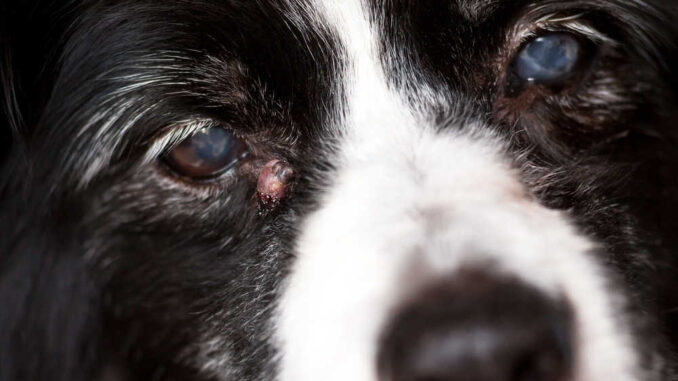
This article was updated on September 19th, 2023
Sebaceous Cysts in dogs is one health issue for which dog owners should be watchful, but thankfully, they are rarely cause for major concern and can be addressed by veterinarians fairly easily.
As a veterinarian with nearly 20 years of experience in practice, I have treated hundreds of dogs with sebaceous cysts and other types of cysts. In this article, I will share pictures and discuss treatment options.
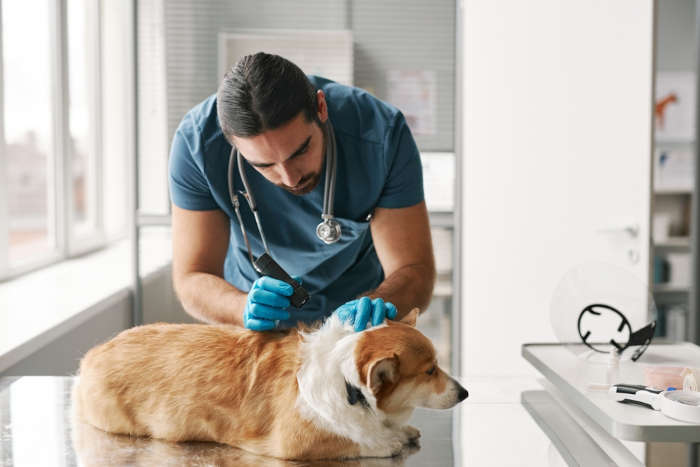
What Are Sebaceous Cysts?
Sebaceous cysts are abnormal growths on a dog’s skin that are filled with liquid or a thick, pus-like material. They can come in many different shapes and sizes. They appear when skin pores or hair follicles are blocked by dirt or scar tissue. They are typically hollow masses with the liquid contents trapped inside.
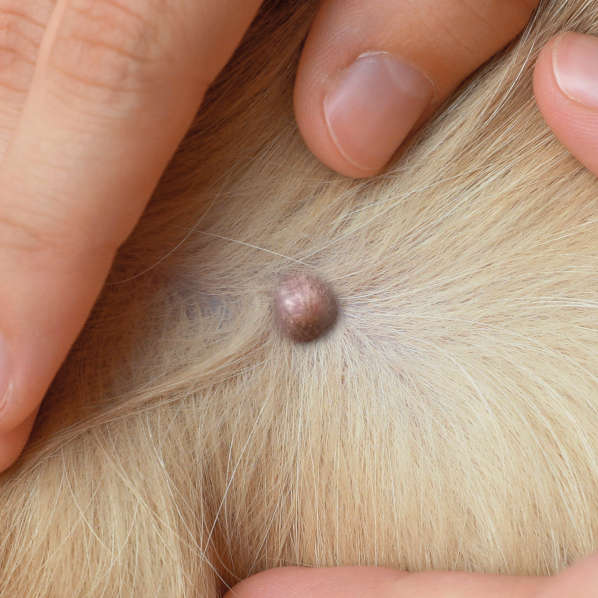
Dogs have sebaceous glands, which are glands located in the skin layer that secrete sebum into the base of hair follicles. Sebum is a waxy, oily secretion that is used for lubrication of the skin and hair.
Sebaceous cysts may form when the sebaceous gland becomes blocked and then clogged. If left blocked for a period of time, the material in the gland cannot exit the duct and may form into a cyst on top of the skin.
What Do They Look Like? [With Pictures]
When you notice a new lump or bump on your dog, the first thing to do is to make an appointment with their veterinarian. However, in the meantime, there are some characteristics you can look for to try to determine if the lump your dog has is, in fact, a sebaceous cyst.
Upon inspection, a sebaceous cyst will be small, attached to the skin, and typically the same color as the skin or whitish pink. You may notice it for the first time when your dog is licking it or scratching at it. Sebaceous cysts can irritate dogs, and you may find wet hair or discoloration in the area.
Pictures
This picture is a close-up of a sebaceous cyst on a dog: the cyst is the same color as the dog’s skin and blends in with the hair, which may make it difficult to find.
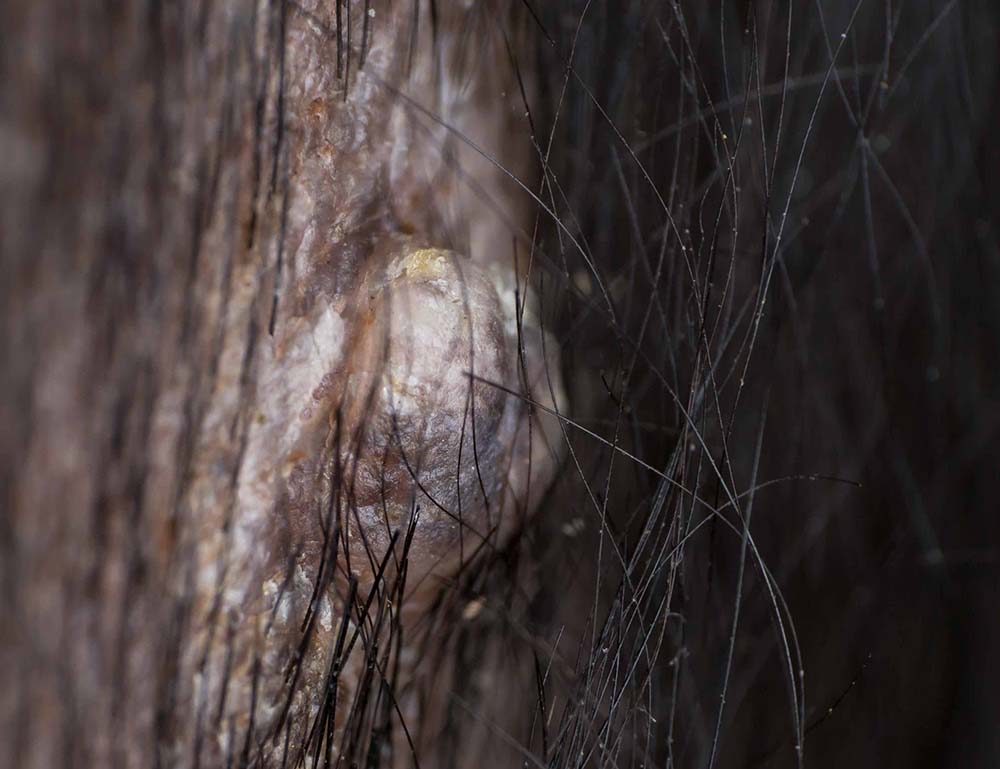
Sebaceous cysts are also often discovered after grooming when the hair is shorter and the cysts are more visible. It is also common for groomers to accidentally nick a cyst they cannot see, resulting in mild bleeding and scabbing, making the cyst more noticeable.
Below is another picture of a cyst which was found on a dog’s neck under a thick layer of hair:
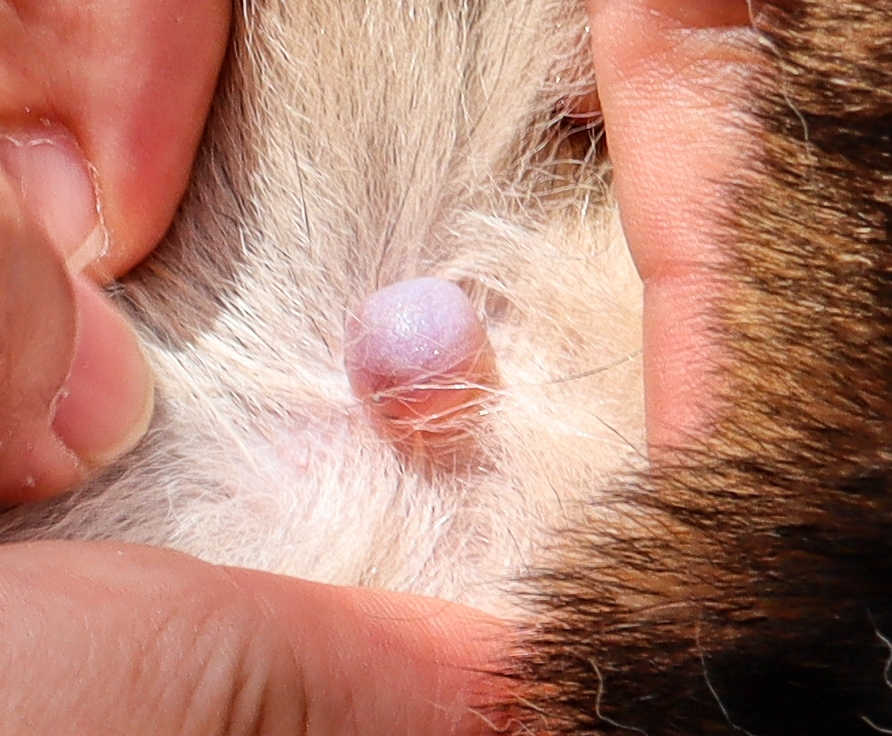
The sebaceous cyst on the following picture appears as a raised, dark pink or purple lesion that is dry and flaky.
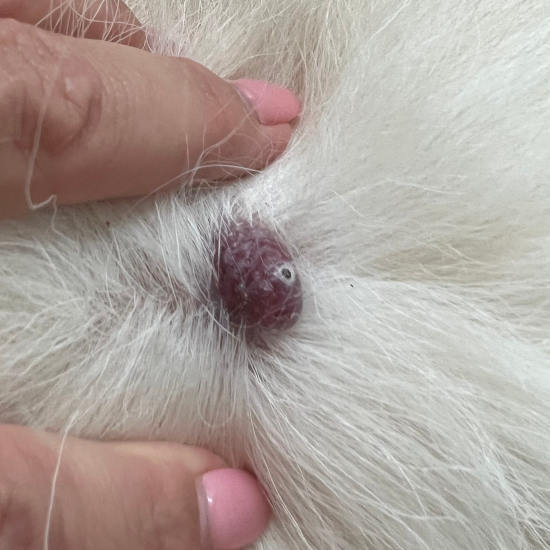
They can also look pink. The cyst below looks like a pink, pearly bump that is raised and ovoid shape.
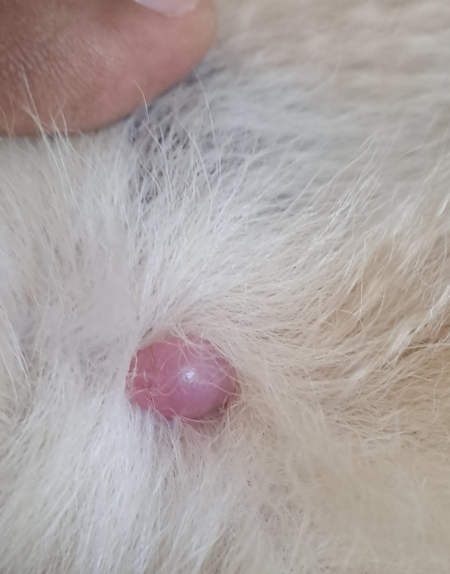
Related post: 6 Types of Cysts in Dogs [With Pictures], and How to Treat
Do Sebaceous Cysts Bother Dogs?
Though unlikely to be cancerous, they can significantly impact your dog’s quality of life. Some sebaceous cysts are not bothersome to the dog at all, but some may cause itching, pain, and irritation that causes your dog great distress. These cysts will need to be removed surgically.
Although most sebaceous cysts are not dangerous and not cancerous, they can look like other types of of cysts that can be more harmful to your dog. Just to be sure, your vet will likely take a sample for analysis (See our section below “How To Identify Sebaceous Cysts”).
Will Sebaceous cysts go away on their own?
They may indeed sometimes go away on their own, but it’s still recommended to seek veterinary treatment to prevent infection or bleeding.
Treatment Options & Recovery
Sebaceous cysts are benign and generally do not need any urgent treatment. Some may resolve on their own (‘Come to a head’ and burst or ooze out the pus/gunk inside) or may “fill-up” again as the cyst lining is still present. Seeing the contents of the cyst may be disturbing to owners, but it’s important to keep the area clean and dry to prevent infection. Surgical intervention is often indicated and can usually be done awake with a local block. The entire cyst can be removed, or an incision can be made to clean the cyst out and to remove the lining.
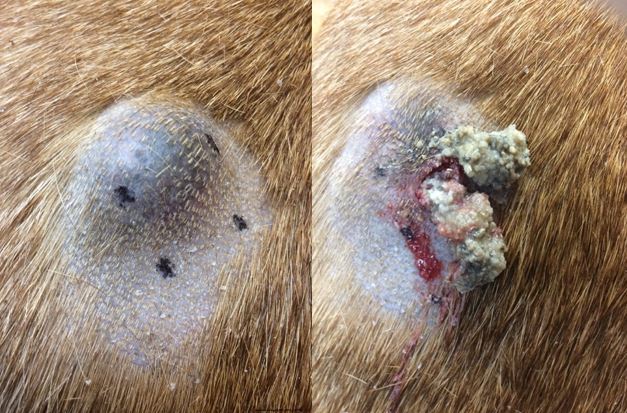
The necessary treatment for a dog’s sebaceous cysts depends on whether the cyst is bothering the dog or not. If the cyst itches, bleeds, oozes, or scabs, it will likely need to be removed surgically.
If the cyst is small and not bothering the dog (or the owner), it is reasonable to leave the cyst alone. Some sebaceous cysts will clear over time. Using an anti-seborrheic shampoo that contains benzoyl peroxide or salicylic acid can help to unblock the follicles and lead to faster resolution.
Can You “Pop” Sebaceous Cysts at Home?
No, you should not attempt to squeeze or pop them at home without your vet. This can lead to pain and infection, as well as scar tissue that will predispose the dog to the formation of more cysts in the future.
General Cost to Treat
Depending on the size of your dog and the stage of the cyst, the cost for treatment may range from $100 to $500.
If the sebaceous cyst appears to cause pain or discomfort for your pet it might be worth getting them surgically removed. The surgery procedure will cost approximately $500 to $1000.
Recovery
If Sebaceous cysts are surgically removed, recovery time for most dogs is short, typically a few days to a week. It is imperative to keep the area clean and dry and to prevent the dog from licking or scratching at the stitches. Pain medications and antibiotics will be given as needed.
Where Sebaceous Cysts Form
Sebaceous cysts arise from the skin and the hair follicles located within it, so they may be found almost anywhere on a dog’s body. However, they are most common on the top of the head, neck, chest, abdomen, and back. They are pretty rare on the feet, ears, or tail. You can see on the image below a sebaceous cyst located on a dog’s head, right next to the eye.
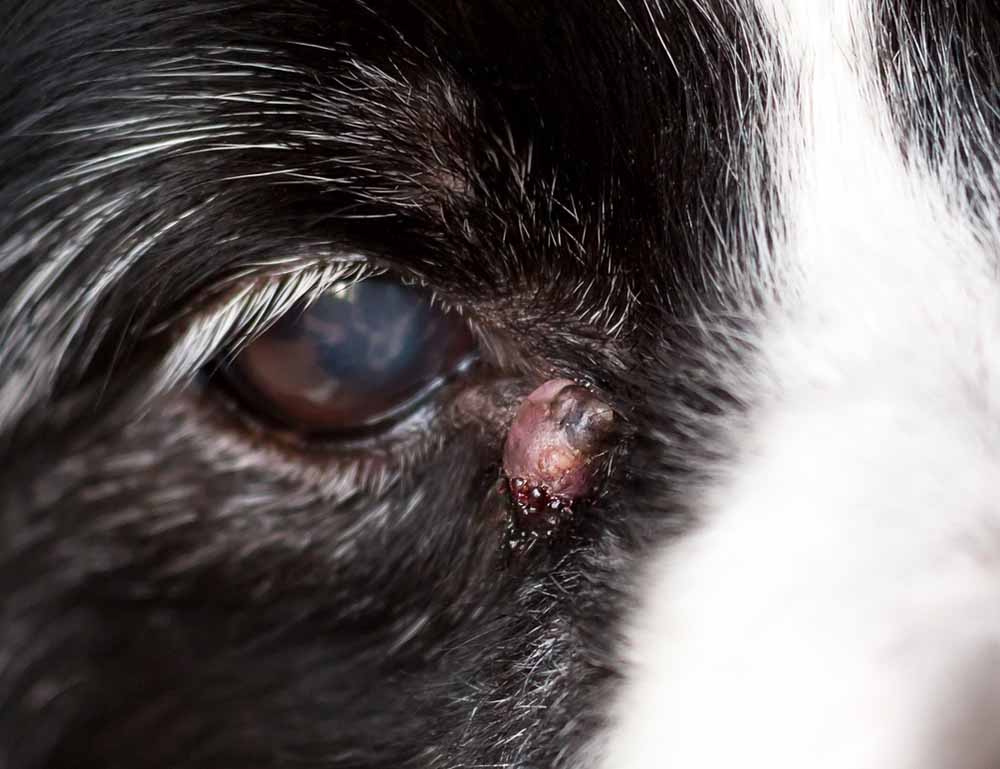
How To Identify Sebaceous Cysts
Any newly noticed lump or bump should be evaluated by your dog’s veterinarian as soon as possible. When you speak to your veterinarian, be prepared to show the location of the lumps or bumps to them, as well as a brief history of how long they have been present and how quickly they are getting larger.
- Sample: The doctor will likely use a small needle to take a sample of cells from the mess (test called a fine needle aspirate) to examine it under a high-powered microscope. Often, a sebaceous cyst is easily identified with this simple procedure.
- Biopsy: If sample analysis is not conclusive, your veterinarian may recommend taking a biopsy and sending it to a veterinary pathologist to be examined. A biopsy can typically be performed in the veterinarian’s office with either light sedation or general anesthesia. A small sample of the mass will be removed and sent to the lab. This procedure enables a more accurate diagnosis.
- Surgical Removal: Alternatively, your dog’s doctor may recommend proceeding to surgical removal. This allows for removal of the mass as soon as possible, and after removal, the mass will be sent to the lab for a diagnosis. This plan of action can remove the need for multiple visits, procedures, and charges from the veterinary pathologist.
Causes
There are numerous causes. Sometimes the exact cause of these cysts is not determined; however, the end result is a blocking of the duct of the gland, resulting in the cyst.
Common issues leading to the formation of these cysts include:
1- Dog’s genetics: sebaceous cysts are seen more often in dogs with a previous history of sebaceous cysts.
2- Trauma to the area, which can cause injury to the follicle or glands or create “pressure point” damage.
3- Skin infections, scar tissue or debris that can result in the blockage of the opening of the pore or the follicle.
4- Age: sebaceous cysts are more common in middle age to older dogs.
When sebum, cells, and oil become trapped in the sebaceous gland, the body acts to push the material into a small sac. This is the result of the blockage and how sebaceous cysts are formed.
Prevention
Unfortunately, there is no way to prevent sebaceous cysts. However, an owner can do things to lessen the occurrence of the cysts.
Frequent brushing, grooming on a regular schedule, and exfoliating or anti-seborrheic shampoos are all helpful for a dog that is predisposed to sebaceous cysts. Encourage the dog to leave any bumps on their skin alone and not to scratch or lick them.
Frequently Asked Questions
1. Which dog breeds are most likely to form sebaceous cysts?
In my experience, schnauzers, both standard and miniature, are by far the most likely breed to present with sebaceous cysts. I frequently diagnose these cysts in other breeds, including Yorkshire Terriers and Shih Tzus. However, any breed may form a sebaceous cyst. According to VCA Hospitals “Schnauzers, Shih Tzus, Boxer Dogs, and Basset Hounds have a genetic predisposition for follicular cysts.”
2. What’s Inside a sebaceous cyst?
The contents of a sebaceous cyst are:
- sebum and dead skin,
- oil secretions,
- dirt, and
- hair cells.
Read More:
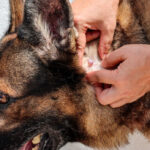 Types of Cysts Often Found on a Dog’s Neck or Head [Vet Advice] - Canine cysts of the head and neck are fairly common and most of them don’t cause serious problems. There are… [...]
Types of Cysts Often Found on a Dog’s Neck or Head [Vet Advice] - Canine cysts of the head and neck are fairly common and most of them don’t cause serious problems. There are… [...]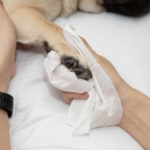 4 Cysts Often Found on Dog Paws [With Pictures & Vet Advice] - Ahh dog feet, giant Great Dane Marmaduke paws, tiny terrier tootsies, the puffy, fluffy white feet of a Bichon Frisé.… [...]
4 Cysts Often Found on Dog Paws [With Pictures & Vet Advice] - Ahh dog feet, giant Great Dane Marmaduke paws, tiny terrier tootsies, the puffy, fluffy white feet of a Bichon Frisé.… [...] Eyelid Cysts in Dogs: FAQ With Our Veterinarian - Eyelid cysts are very common, particularly in older dogs. Oftentimes, an owner is unaware that they’re present as they can… [...]
Eyelid Cysts in Dogs: FAQ With Our Veterinarian - Eyelid cysts are very common, particularly in older dogs. Oftentimes, an owner is unaware that they’re present as they can… [...] Burst or Ruptured Cysts on Dogs: Our Vet Shares What to Do - When a dog does come into my clinic with a ruptured cyst, the owner can be quite alarmed by the… [...]
Burst or Ruptured Cysts on Dogs: Our Vet Shares What to Do - When a dog does come into my clinic with a ruptured cyst, the owner can be quite alarmed by the… [...] Dog Hair Follicle (Follicular) Cysts: Pictures + Vet FAQ - It is extremely common for dogs to develop lumps and bumps anywhere on their body. They can range in size,… [...]
Dog Hair Follicle (Follicular) Cysts: Pictures + Vet FAQ - It is extremely common for dogs to develop lumps and bumps anywhere on their body. They can range in size,… [...] Eye Cysts in Dogs: Pictures & Vet Advice - Introduction: about eye cysts in dogs Finding an unexpected growth or mass on your dog can be distressing, but it… [...]
Eye Cysts in Dogs: Pictures & Vet Advice - Introduction: about eye cysts in dogs Finding an unexpected growth or mass on your dog can be distressing, but it… [...]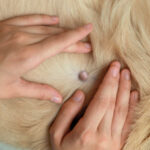 6 Types of Cysts in Dogs [With Pictures], and How to Treat - As a practicing veterinarian for over 17 years, I have treated hundreds of dogs with cysts. Cysts are a very… [...]
6 Types of Cysts in Dogs [With Pictures], and How to Treat - As a practicing veterinarian for over 17 years, I have treated hundreds of dogs with cysts. Cysts are a very… [...]Citations
1. Gross, T. L., Ihrke, P. J., Walder, E. J., & Affolter, V. K. (2008). Skin Diseases of the Dog and Cat: Clinical and Histopathologic Diagnosis. Blackwell Science Ltd. https://doi.org/10.1002/9780470752487.
Disclaimer: This website's content is not a substitute for veterinary care. Always consult with your veterinarian for healthcare decisions. Read More.


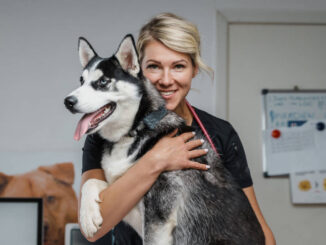
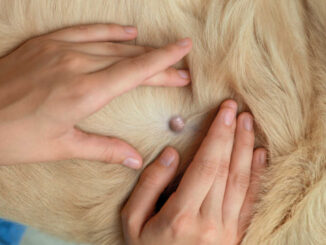
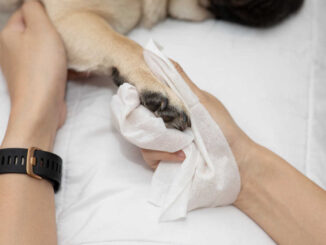
Thank you for this informative post! I had no idea sebaceous cysts were so common in dogs. The pictures were really helpful, and I appreciate the veterinarian advice on treatment options. I’m now more aware of what to look for with my dog.
Thank you for this informative post! I recently noticed a bump on my dog’s skin and was concerned it might be a cyst. Your pictures and explanation helped me understand what to look for and when to seek veterinary advice. I appreciate the tips on treatment options too!
Thank you for sharing this information! I’ve been concerned about a small bump on my dog’s skin, and the pictures really helped me understand what a sebaceous cyst looks like. I appreciate the veterinarian advice on when to seek treatment. It’s comforting to have guidance on how to manage this!
Thank you for this informative post! I had no idea sebaceous cysts were so common in dogs. The pictures really helped me understand what to look for. I’ll definitely keep an eye on my pup’s skin from now on. Appreciate the veterinarian advice on treatment options!
Thank you for this informative post! I’ve noticed a couple of lumps on my dog’s skin and wasn’t sure if they could be sebaceous cysts. Your pictures and explanations have really helped me understand what to look for. I appreciate the veterinarian tips on when to seek help!
Thank you for sharing such detailed information about sebaceous cysts in dogs! I found the pictures really helpful for identifying them. Your veterinarian advice is reassuring, and it’s good to know what steps to take if I notice one on my pet. Keep up the great work!